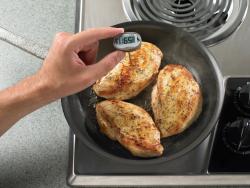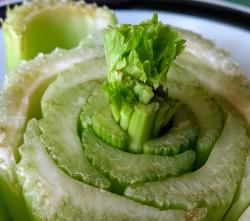Staying Safe – Food Safety in Four Steps
Recipe and Nutrition Tips – Enjoy Whole Grains and Fried Rice Recipe
Physical Activity Tips – Create an Obstacle Course
Food Access Resources in Massachusetts – Using Foods You Have on Hand
Staying Safe
 Keeping you and your family healthy during this time is important. Follow these proper food safety procedures to prevent foodborne illness.
Keeping you and your family healthy during this time is important. Follow these proper food safety procedures to prevent foodborne illness.
- Keep your hands and food surfaces CLEAN.
- SEPARATE FOODS so that they can’t contaminate each other.
- COOK foods to safe temperatures.
- CHILL foods promptly.
Who is at more risk for foodborne illness?
Foodborne illness can affect anyone who eats contaminated food, but certain groups of people are more at risk. These groups include cancer patients, children under the age of 5, people with diabetes, HIV/AIDS patients, older adults, people with autoimmune diseases, and pregnant women.
Recipes and Nutrition Tips
Trying to include more whole grains into your meals? Here are two recipes that can be enjoyed as a side dish or a main dish.
- This Fried Rice recipe features whole grains and vitamins A and C. It is easy to change up with any vegetables or protein you already have on hand. Use either fresh or frozen vegetables when creating this dish.
- Consider adding cubed tofu to fried rice for added protein and a new twist.
- If your family enjoys fried rice, you might like to try another grain called quinoa. Watch this video to see the amazing health benefits of quinoa and how to prepare it.
Physical Activity Tips
 Look for a way to get your whole family involved in physical activity.
Look for a way to get your whole family involved in physical activity.
Create an obstacle course:
- Design your course outside using sidewalk chalk, cones, buckets, or stick markers. If inside, use anything that is visible or stands up on its own, such as a laundry basket, chairs, or pillows.
- At each activity station, place a sign naming an exercise to complete before moving on to the next location.
- Activity station ideas: Jumping jacks, hop up and down, walk backwards for 10 steps, hopscotch, run in place, and balance on one foot for 10 seconds.
- Do you have a bunch of celery in your refrigerator? Cut 2 inches from the base of the stalk and place it in a shallow bowl with water, cut side up.
- Spray the top of the celery with water.
- Every few days, replace the water with fresh water and watch for roots to appear. Do you see any new shoots growing from the top?
- When there are roots, transplant the celery into the ground if the weather is warm enough or into a pot with potting soil. Remember to keep watering the plant.
Visit this website and try this technique with other vegetables, such as lettuce and green onions.
Food Access Resources in Massachusetts
 Are you looking for ways to make the most of your pantry? Using foods you have on hand saves money and extra trips to the grocery store.
Are you looking for ways to make the most of your pantry? Using foods you have on hand saves money and extra trips to the grocery store.
Visit the Project Bread website to find information and recipes to use your dried beans and other pantry foods.
Do you need help buying healthy food?
You may be eligible for the Supplemental Nutrition Assistance Program (SNAP). Apply for SNAP benefits here.
For more SNAP Nutrition Education information, visit their website.

